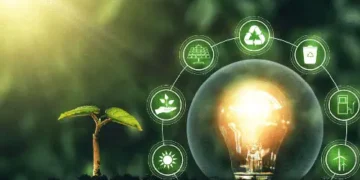Blitz Bureau
GROWTH fetishism, a phenomenon that views GDP growth as the ultimate measure of economic progress, has characterised the development paradigm of the Global South. The BRICS nations, including India, epitomise this vision. From a paradigmatic perspective, this vision is reductionist, to say the least – the complex multidimensional notion of development is reduced to a single numerical variable. Such unbridled, mindless pursuit of growth often blurs the costs of growth, namely, accelerating climate change, deepening inequality, and a degrading ecosystem.
Climate change is not fundamentally an environmental problem, but a developmental one. It emerges from the systemic failure to factor in the environmental and social costs of unbridled growth. And yet, in the aftermath of the Covid-19 pandemic, most recovery strategies in the Global South have reinforced the same old blueprint: high capital expenditure, infrastructure expansion, and resource-intensive urbanisation. India, for instance, increased its capital expenditure outlay by over 35 per cent in the immediate post-pandemic year 2022-23 compared to pre-pandemic levels.
It is not that such expansions are not needed. India needs physical capital expansion to promote private investment, given that its past growth has largely been driven by private consumption. This paradox is stark: while nations pledge net-zero emissions and accelerate the transition to renewables, they simultaneously clear vast tracts of land that act as carbon sinks for construction and industrial expansion. Such ecosystem destruction undermines the very climate mitigation efforts those transitions seek to support. The reductionist definition of ‘Green Transition’ as a shift from fossil fuels to renewable energy ignores the fact that lifestyle choices, consumption patterns, and land-use practices are equally crucial in determining the success of any climate strategy. Green growth – often presented as a win-win for the economy and ecology – assumes that GDP can be decoupled from natural resource use. However, studies confirm that such decoupling is neither empirically substantiated nor economically sustainable in the long term.
Given this, Prime Minister Narendra Modi’s call for a global mass movement through LiFE— Lifestyle for the Environment—at COP26 in Glasgow seemed to provide an alternate development pathway. It calls for sustainable lifestyles rooted in responsible consumption, ecological mindfulness, and alignment with nature’s regenerative capacities. In the process, LiFE intersects with all the Sustainable Development Goals (SDGs). The approach does not discard growth ambitions; rather, it asks nations and individuals alike to realign their paths to progress in harmony with nature.
India’s challenge, therefore, is not to choose between growth and degrowth, but to transcend this binary altogether. India must define a developmental pathway that acknowledges its need to grow to achieve its Viksit Bharat by 2047 goal, but not in the business-as-usual mode through natural capital degradation and widening inequality.
The philosophy of inclusive wealth needs to be embraced at a more micro-level, including the corporate sector. These four forms of capital are embedded in the various delineations of sustainability. India also needs to strengthen its climate adaptation financing, a sector largely ignored by financial institutions. This will require creating a market for adaptation with a properly exhibited return on investment for the financial institutions, mandating a substantial portion of the CSR expenditures to get into adaptation financing, and tapping philanthropic financing. India’s climate-resilient development architecture needs growth strategies and an aggressive push to reduce income and social inequality
































